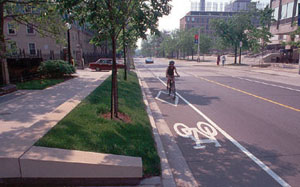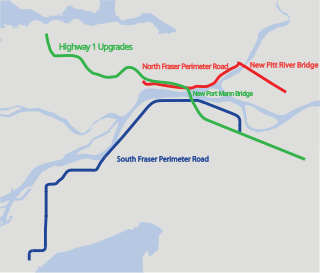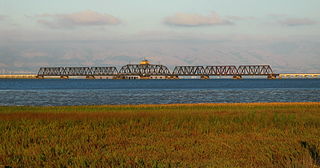
The Transportation and Land Use Coalition (TALC) is a non-profit organization which serves as a partnership of over 100 organizations in the San Francisco Bay Area focused on smart growth, public transportation, environmental causes, and other issues connected with transit and urban planning. TALC was founded in 1997, and is based in Oakland, California. [1] A year after its founding, TALC's involvement in public-transportation advocacy was cited as part of a shift toward public support for increasing funding for buses, trains, and bike paths. [2]

San Francisco Bay Area is a populous region surrounding the San Francisco, San Pablo and Suisun Bay estuaries in the northern part of the U.S. state of California. Although the exact boundaries of the region vary depending on the source, the Bay Area is generally accepted to include the nine counties that border the aforementioned estuaries: Alameda, Contra Costa, Marin, Napa, San Mateo, Santa Clara, Solano, Sonoma, and San Francisco. Other sources may exclude parts of or even entire counties, or expand the definition to include neighboring counties that don't border the bay such as San Benito, San Joaquin, and Santa Cruz.
Smart growth is an urban planning and transportation theory that concentrates growth in compact walkable urban centers to avoid sprawl. It also advocates compact, transit-oriented, walkable, bicycle-friendly land use, including neighborhood schools, complete streets, and mixed-use development with a range of housing choices. The term "smart growth" is particularly used in North America. In Europe and particularly the UK, the terms "compact city", "urban densification" or "urban intensification" have often been used to describe similar concepts, which have influenced government planning policies in the UK, the Netherlands and several other European countries.

Environmentalism or environmental rights is a broad philosophy, ideology, and social movement regarding concerns for environmental protection and improvement of the health of the environment, particularly as the measure for this health seeks to incorporate the impact of changes to the environment on humans, animals, plants and non-living matter. While environmentalism focuses more on the environmental and nature-related aspects of green ideology and politics, ecologism combines the ideology of social ecology and environmentalism. Ecologism is more commonly used in continental European languages while ‘environmentalism’ is more commonly used in English but the words have slightly different connotations.
TALC member groups include regional and national organizations such as the Greenbelt Alliance, the Sierra Club, in addition to a wide range of local groups throughout the Bay Area. [3]
Greenbelt Alliance is a non-profit land conservation and urban planning organization that has worked in California's nine-county San Francisco Bay Area since 1958.

The Sierra Club is an environmental organization in the United States. It was founded on May 28, 1892, in San Francisco, California, by the Scottish-American preservationist John Muir, who became its first president. The Sierra Club primarily operates in the United States; an affiliated organization, Sierra Club Canada, operates in Canada and deals exclusively with Canadian issues.
TALC has advocated for a number of transit-related projects and ballot measures since its inception. Examples of such projects include:
- Measure B, Alameda County, 2000. The Measure would renew a half-cent sales tax to fund transportation projects. TALC supported the measure, engaging in a public education and outreach campaign; the measure passed and funded the extension of the Bay Area Rapid Transit (BART) system and other transit projects. [4]
- Regional Measure 2, 2004. This Measure, which adopted substantial language from TALC proposals, increased bridge fare on the seven state-owned bridges in the Bay Area. [5] The Measure passed, generating revenue for a range of projects including BART expansion and enhanced ferry service.
- AB 2444, 2006. This legislation, sponsored by TALC, would have established a vehicle registration fee, the funds from which would go to priority transit improvements and environmental projects. The bill passed in the legislature but was vetoed by Governor Arnold Schwarzenegger. [6]

Bay Area Rapid Transit (BART) is a rapid transit public transportation system serving the San Francisco Bay Area in California. The heavy rail elevated and subway system connects San Francisco and Oakland with urban and suburban areas in Alameda, Contra Costa, and San Mateo counties. BART serves 48 stations along six routes on 112 miles (180 km) of rapid transit lines, including a ten-mile spur line in eastern Contra Costa County which utilizes diesel multiple-unit trains and a 3.2-mile (5.1 km) automated guideway transit line to the Oakland International Airport. With an average of 423,000 weekday passengers and 124.2 million annual passengers in fiscal year 2017, BART is the fifth-busiest heavy rail rapid transit system in the United States.

Arnold Alois Schwarzenegger is an Austrian-American actor, filmmaker, businessman, author, philanthropist, activist, politician, and former professional bodybuilder and powerlifter. He served as the 38th Governor of California, from 2003 to 2011.
In 2008, the Transportation and Land Use Coalition was renamed TransForm.















